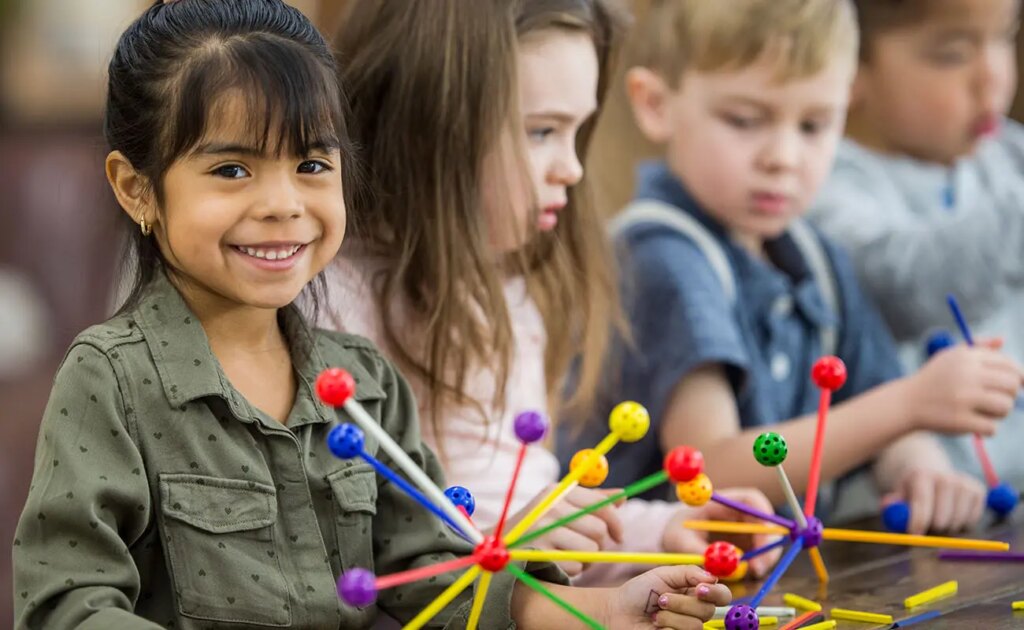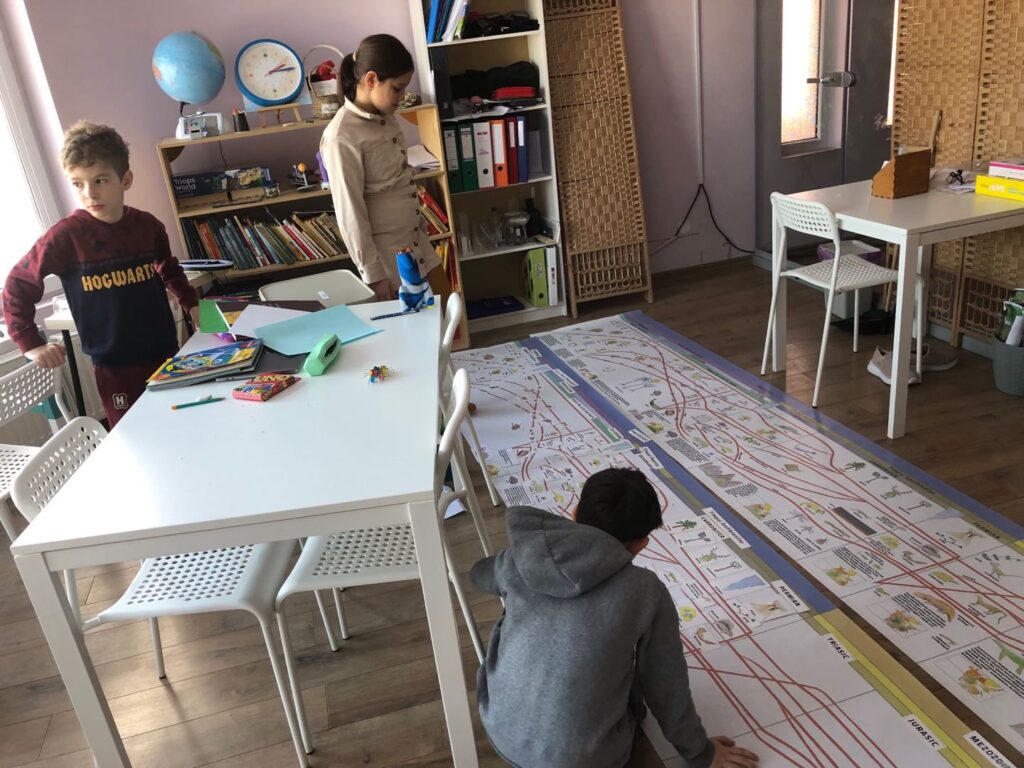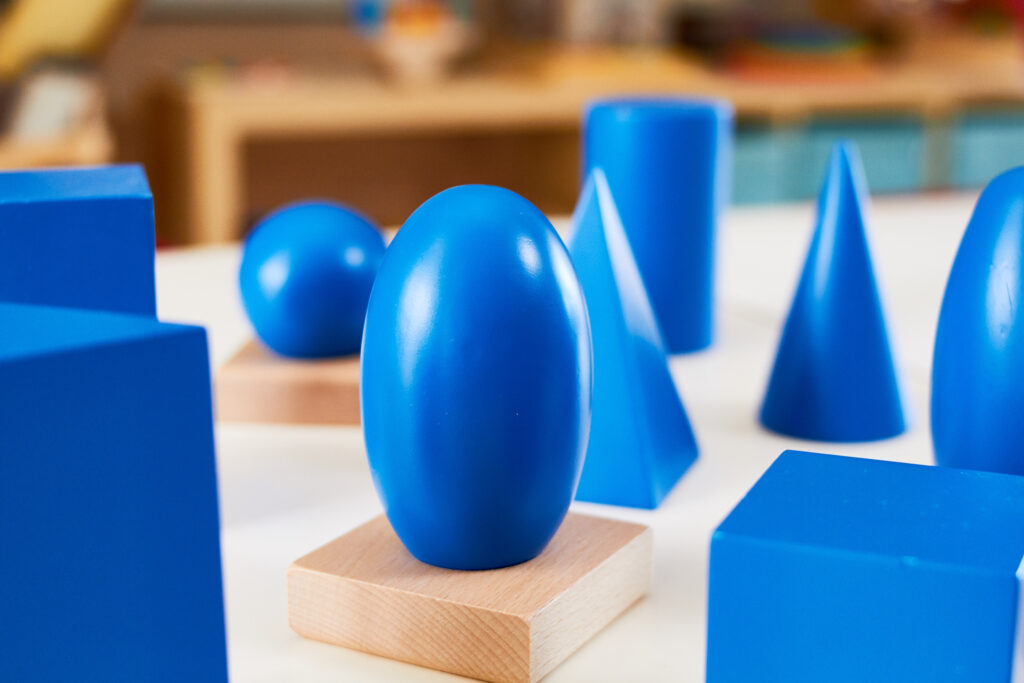Metoda pedagogica Montessori este, printre altele, despre asimilarea abstractului prin concret. Orice concept cognitiv poate fi definit fenomenologic, prin experienta senzoriala. Dar ceea ce este mai putin stiut este ca metoda a fost revolutionara si este inca eficace si eficienta, in secolul XXI.
Spre finalul anilor ’80, 1980, ca sa fim exacti, studiile inca aratau rezultate contractidictorii in privinta posibilitatii de “comunicare” intre simturi? Unii cercetatori aratau ca informatiile obtinute vizual vor fi transferate simtului tactil, ceea ce inseamna ca vizualizarea imaginii unui obiect ne-ar permite sa recunoastem obiectul atunci cand il atingem si exploram pentru prima data, altii identificau reversul medaliei, ca putem recunoaste vizual un obiect doar dupa ce am avut ocazia sa il exploram tactil. Si pentru ca suntem convinsi ca vreti sa vedeti aceste studii, vom reda paragrafe din acestea, exact asa cum se regasesc ele publicate.
Studii
„At the age of 5 months, babies show haptic recognition of the shape of objects which they have already seen, but it has not been possible to observe the reverse transfer.”
(Streri, 1993, p. 130; cf. Streri and Pecheux, 1986)
Studiul 2:
„Four-month-old infants held two rings, one in each hand, out of the field of view. In one condition, the rings could be moved independently; in the other condition, the rings could only be moved rigidly together. After exploring the rings haptically, infants received a haptic or visual test with pairs of rings that were connected or separated. The findings of four experiments provide evidence that infants explored the rings bimanually, producing patterns of rigid or independent motion, that infants discriminated between the two motion patterns, and that this discrimination transferred from touch to vision. Most importantly, the exper- iments provide evidence that infants perceived the unity and boundaries of ob- jects by detecting the motion patterns they themselves produced. Infants who explored the independently movable rings perceived two distinct objects, whereas those who explored the rigidly movable rings perceived a single object that was connected between the two hands. Since the same motion patterns specify object boundaries in the visual mode, object perception may depend on a relatively central process.” (Arlette Streri & Elizabeth S. Spelke in „Cognitive Psychology, 1988)
Studiul 3:
„This paper aims to display the numerous and various competencies of the infant’s hands for processing information about objects shape. Several experiments on infants from birth and up to five months of age using an habituation/dishabituation procedure, intermodal transfer task between touch and vision, and various cognitive tasks revealed that infants might perceive and understand the physical world through their hands without visual control. From birth, infants can habituate to shape and detect discrepancies between shapes equally well with either hand. However, beyond this first level of information processing, as soon as the tasks impose a cognitive load, such as memory, asymmetry between hands and non-reversible transfer between hands and eyes are evident during the first five months. In contrast, when infants abstract information from an event not totally felt or seen, amodal mechanisms underlie haptic and visual knowledge in early infancy.” Arlette Streri & Julie Feron © 2005 Elsevier Inc. All rights reserved.
Asa cum spuneam, studiile au fost numeroase, iar rezultatele neclare pentru un pedagog, care incearca sa determine cea mai buna abordare in ghidarea unui copil catre asimilarea conceptului „forma”.
Din fericire, doi cercetatori au gasit viziunea balansata asupra acestui aspect, dupa parerea noastra, iar rezultatele recenziilor facute de ele asupra altor studii coroborate cu desfasurarea propriei cercetari, au aratat urmatoarele concluzii:
„Bushnell and Baxt, in 1998, reviewed several studies that showed different results around our ability, when we are a few months old, to visually recognize something we have known only haptically. The factors that they found to contribute to these discrepancies are:
1. Children require lengthy or repeated exposures to haptic information to form memory representations that are adequate to support later recognition; the relatively brief exposures to the novel stimuli in the cross-modal studies may not have met this criterion.
2. In the identification studies, children explored the stimuli with both hands, whereas in at least four of the cross-modal studies (Abravanel, 1972; Bryant & Raz, 1975; Rose et al., 1972; Rudel & Teuber, 1964), children were restricted to exploring the stimuli with just one hand. This variation is important because haptic perception may be more precise and efficient when two hands are used rather than one. Lederman and Klatzky (1987) have identified the hand movement patterns that are optimal for extracting various types of information about objects during haptic exploration; in most of these “exploratory procedures,” one hand stabilizes and orients the object while the other hand executes a particular information-gathering motion (e.g., poking the object to assess its compliance or tracing the object’s contours to extract information about shape). Thus exploration with just one hand may yield ambiguous information because the sensations experienced by the hand cannot be easily correlated with the object’s position in space, its resistance, and so forth, which are usually determined by the second hand.
3. The common objects in the identification studies varied from one another in all the ways natural objects can vary—in size, shape, weight, texture, temperature, compliance, and so forth—whereas the stimuli in the cross-modal studies differed from one another only in one dimension, usually just in shape but in some instances just in texture. This contrast is important because multidimensional objects may be easier to haptically perceive and discriminate than objects differing along just one dimension, especially if that one dimension is shape. Klatzky, Lederman, and Reed (1989) found that objects defined redundantly by values on two or three dimensions were classified by touch more readily than objects defined by their value on just a single dimension, and the results of several other studies by these researchers have indicated that the property of shape is less salient to the hands and less efficiently perceived by the hands than are material properties such as texture, temperature, and compliance (Klatzky, Lederman, & Metzger, 1985; Klatzky, Lederman, & Reed, 1987; Lederman & Klatzky, 1987).
Revolutie
Si acum sa va spunem de ce Maria Montessori si echipa ei au fost atat de revolutionari.
Punctul 1 al ultimului studiu citat se refera la faptul ca simtul tactil are nevoie de exercitiu prelungit, pentru a putea forma amintiri in creier, care apoi sa poata fi extrase pentru recunoastearea unui obiect. Oriunde in filosofia Montessori puteti gasi accentul pus pe importanta exercitiului repetat al copilului cu un material, pana cand acesta nu mai prezinta provocari pentru copil.





